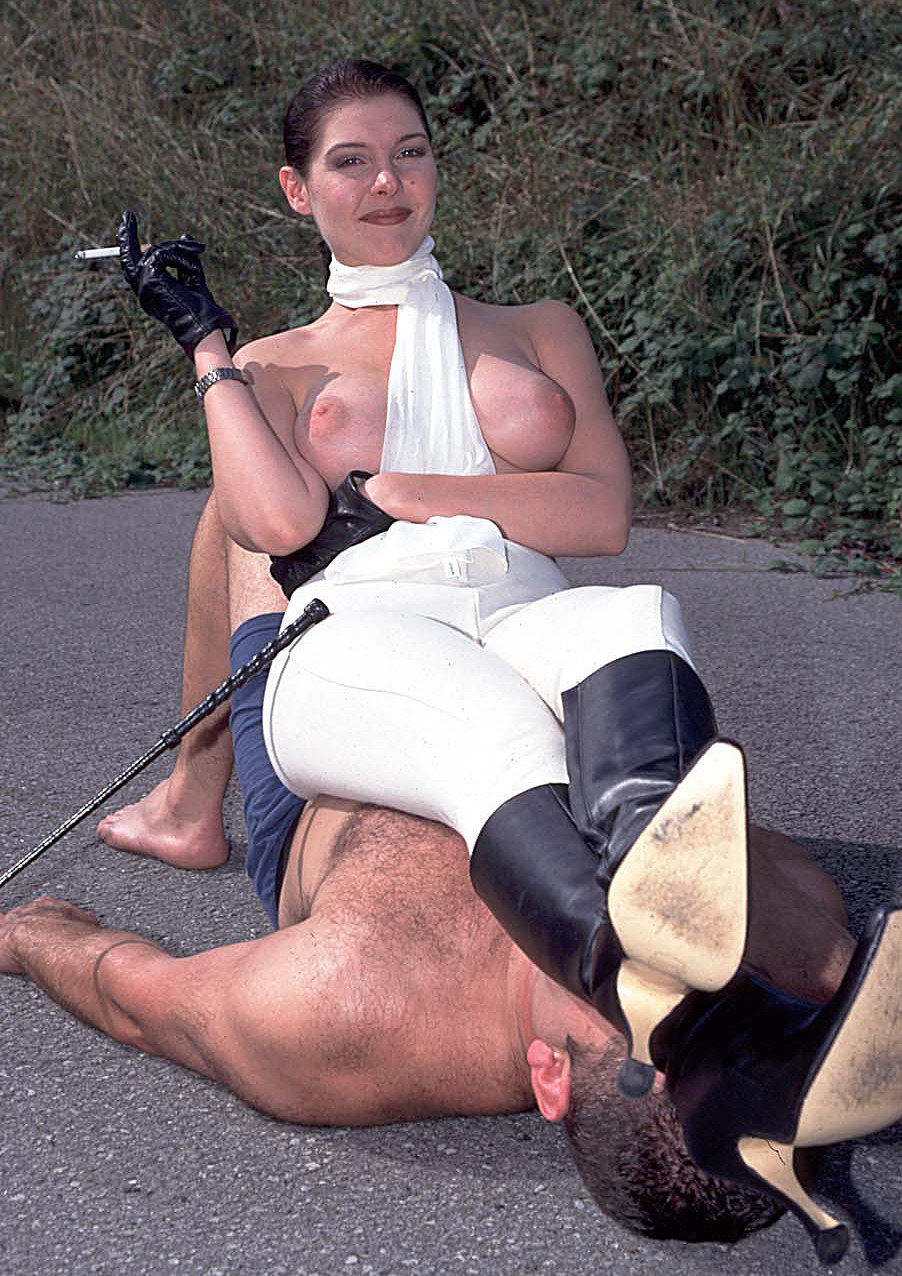In the world of Cruella, Lady Seraphina Blackthorne reigns as one of the most feared and revered figures. Known as the Duchess of Cruelty, she embodies elegance, power, and ruthless authority. Seraphina’s cruelty is as refined as her taste in fashion; her demeanor icy, her gaze piercing, and her punishments as artfully delivered as they are devastating. Every movement she makes is deliberate, every word carefully chosen to inspire fear, obedience, and submission.
Lady Seraphina oversees the Order of Discipline, a faction responsible for maintaining absolute control over Cruella‘s male underclass. Her methods are known to be meticulous and psychologically piercing; she doesn’t just break the body, she breaks the spirit, ensuring those who cross her are left in a state of eternal submission. She revels in her superiority and is notorious for finding amusement in the suffering of those deemed unworthy. Her iconic weapon of choice is a whip she calls The Widow’s Sting, always close at hand, a symbol of the pain and torment she can unleash without a second thought.
Her pale, flawless exterior is a deceptive veil to the dark soul beneath; a woman who thrives on the power she holds over those beneath her. She does not view men as equals, but as insects, insignificant creatures who exist solely to serve her whims and endure her punishments.

The men of Cruella know that a single misstep in Lady Seraphina’s presence could lead to a lifetime of suffering at her hands. Yet, there is an almost addictive allure to her cruelty; her beauty and refined demeanor make it impossible to look away, even as fear grips their hearts. Some beg for mercy, others for more, but none leave her presence unscarred.
Lady Seraphina’s chambers are a place of both awe and terror, a beautifully adorned space where the finest luxuries and darkest tortures coalesce. To be summoned by her is to be both honored and doomed, as her punishments are as legendary as her beauty.
In Cruella, where the balance of power is entirely in the hands of dominant women, Lady Seraphina Blackthorne stands out as the embodiment of refined cruelty, where submission isn’t just expected; it is demanded, enforced, and savored.
Lady Seraphina Blackthorne is the very embodiment of elegance and sadism, her beauty a mask for the chilling indifference that lies beneath. She is known throughout Cruella as a figure of terrifying grace and refinement, a woman whose every move commands obedience and whose whims are law. To serve her is to be stripped of humanity entirely, for in her eyes, men hold no more value than the objects that fill her estate. To her, they are tools; silent, obedient, and utterly disposable.
Born into one of Cruella’s most powerful families, Lady Seraphina was raised with an unshakable sense of superiority. From an early age, she understood that the world was hers to shape, and those beneath her existed solely for her amusement. She developed an early fascination with control and domination, not merely enjoying the obedience of others but reveling in their suffering. Over time, this fascination hardened into a ruthless philosophy: men were not equals, but objects, no more valuable than a piece of wood, and just as easily burned when their usefulness had ended.
Lady Seraphina’s estate is both a fortress and a palace, a sprawling labyrinth of luxury where every room tells a story of her cruelty. Her halls are lined not with statues, but with men frozen in their duties as human furniture. They stand, kneel, and bend in painful positions, bodies turned into chairs, tables, ashtrays, and bootlickers. Each piece serves a purpose, but like all furniture, their worth is defined by their function. The moment they falter or displease her, they are discarded; burned to ash in the courtyard, their lives snuffed out without a second thought.
Her cruelty knows no bounds. Once, during a particularly muddy season, a young man tasked with licking her boots clean after a day in town gagged at the taste of crushed insects and filth. Lady Seraphina, her gaze cold and unforgiving, placed the sole of her boot against his face, pressing down with deliberate force until his nose cracked beneath the heel. “You exist for my convenience,” she had whispered before turning away, indifferent to his broken body. He, too, was dragged to the courtyard, his usefulness at an end.
For Lady Seraphina, this indifference is second nature. She does not see these men as individuals, nor does she acknowledge their suffering. They are furniture; tools to be used until they break or she tires of them. The men who serve her know this well. They exist in constant fear, knowing that one wrong move could spell the end of their miserable lives. The courtyard, where the burned remains of former servants linger in the air, serves as a grim reminder of what awaits them should they falter.
Despite the fear she inspires, there is a twisted allure to Lady Seraphina’s presence. Men who enter her domain often find themselves drawn to her beauty, mesmerized by her cold elegance. But that allure is deadly, for once they step into her world, they are no longer men; they are objects, bound to her will, and when she tires of them, they will meet the same fate as the others: discarded, burned, and forgotten.
